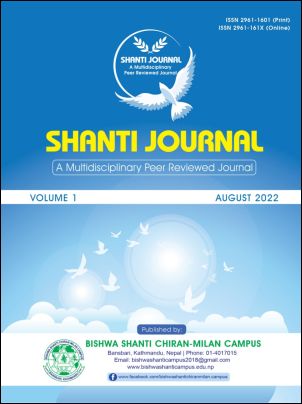Determination of inhabitation percentage of pesticide residue in vegetables with the help of spectrophotometer
DOI:
https://doi.org/10.3126/shantij.v1i1.47812Keywords:
Pesticides, Organophosphate, CarbamateAbstract
The common types of pesticides such as carbamate and organophosphate are cause serious health issues for consumers. Although these have several benefits to preserve fruits, vegetables, and cereals as well as better yield. The farmers should be aware during the used of the pesticides in nature of the pesticides, ratio of pesticide to land area, and waiting period for edible vegetable. This study focused on the quantitative analysis of rapid bioassay of spectrophotometric for inhabitation of pesticides occurs in the vegetables. The nine different vegetables were collected from six places and analyzed then compared with the standard result. Eight vegetable samples provided green coloured indication and one indicated yellow colour by spectrophotometry. Furthermore, the percentage of Op and Ca pesticide residue is below 35%, which indicates such vegetables are edible. But for cucumber the Op was found in the 35-45% range and resulted in yellow colour, it indicates that the vegetables are non-edible. For cucumber, it takes to quarantine for 2-3 days after that the pesticide could be reduced and safe for consumption. It is clear from this study that no vegetable in the local market has a maximum percentage level of pesticide Op and Ca. However, most of the vegetables available in the market of Sudurpaschim province are safe to consume.
Downloads
Downloads
Published
How to Cite
Issue
Section
License
Copyright (c) 2022 Anup Bist, Pream Singh Saud

This work is licensed under a Creative Commons Attribution-NonCommercial 4.0 International License.
This license enables reusers to distribute, remix, adapt, and build upon the material in any medium or format for noncommercial purposes only, and only so long as attribution is given to the creator.




